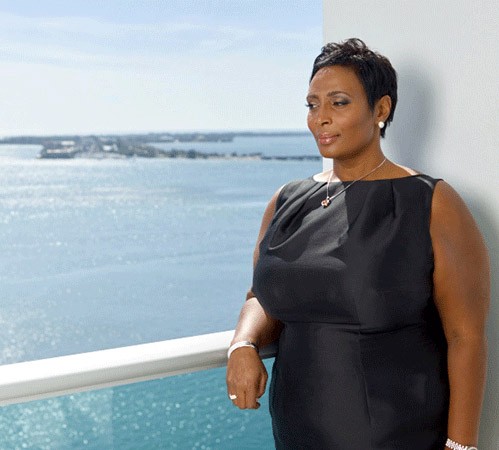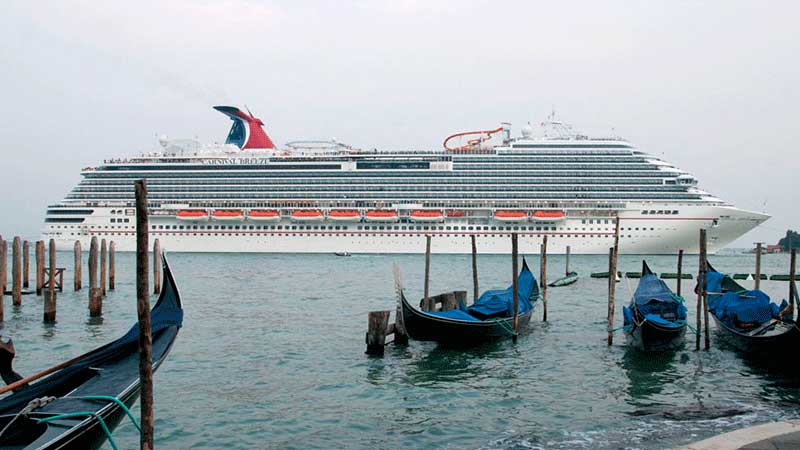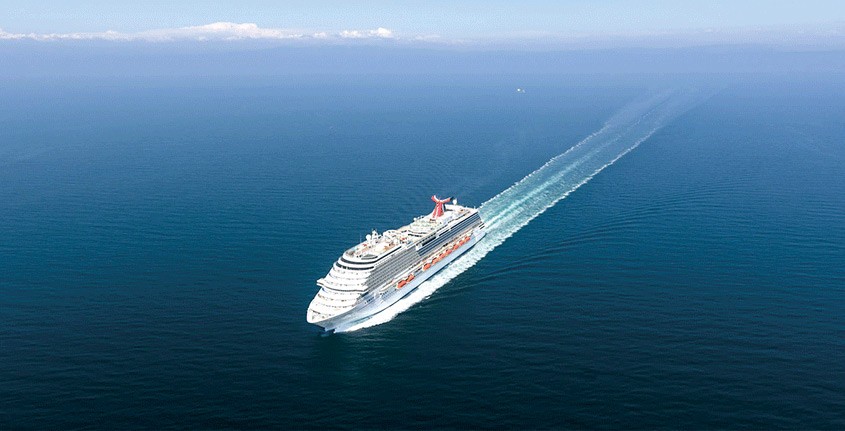Quick Hits
The Challenge: Carnival Corp. buys products and services from thousands of suppliers to operate its 10 cruise lines.
The Plan: Reinvent Carnival’s procurement process to streamline purchasing and better leverage the company’s bargaining power as a high volume buyer.
The Execution: Carnival’s CEO brings procurement veteran Julia Brown into the C-suite to carry out the plan.
The Result: Brown has spent her first months on the job diagnosing Carnival’s myriad procurement challenges.
Carnival Corp. recruited veteran executive and longtime board member Arnold Donald to be its CEO in 2013. He quickly zeroed in on one aspect of the cruise company’s operation ripe for strategic transformation: procurement. Carnival’s purchasing habits varied significantly across its largely independent cruise lines, which host 10.6 million guests annually and comprise nearly half the global cruise market.
Donald sought a veteran procurement executive up to the challenge. Fortunately, one of procurement’s brightest stars happened to have just arrived in Miami, Florida, home of Carnival’s U.S. headquarters.
“I knew if I could get her, it would be a huge win for us,” says Donald. “Containing costs is a strategic imperative for us, but we also need to make sure that everything we do is not just saving pennies. Effective procurement is critical in any organization, but it’s especially vital in a global business of this scale.”
Julia Brown had left procurement briefly after more than 20 years in that field, mostly spent at a trio of consumer-packaged goods giants: Procter & Gamble, Clorox and then Kraft Foods, where Brown helped lead a remarkable turnaround.
Named Carnival’s first-ever chief procurement officer (CPO) in March 2015, Brown now faces the challenge of streamlining Carnival’s purchasing across its 10 brands and better leveraging the $15.9 billion company’s bargaining power as a high-volume buyer. “We want to make sure we’re important enough to our suppliers that they treat us as a customer of choice,” she says.
For Brown, procurement isn’t as simple as finding reliable providers with the lowest-cost bid. There’s a balance to “bringing value by making the right kind of deals and arrangements that create an advantage for our company and also delight our guests,” she says.
Named Carnival’s first-ever chief procurement officer (CPO) in March 2015, Brown now faces the challenge of streamlining Carnival’s purchasing across its 10 brands and better leveraging the $15.9 billion company’s bargaining power as a high-volume buyer.
Reinventing a procurement process depends on the overall business strategy, Brown says.
“What creates a source of advantage for us? What do our guests want? What is important to our stakeholders? I typically will focus on the large, strategic spends to ensure that we are leveraging best practices within and across industries. In most cases, there will be an opportunity and a case for change. Then I design a program to include elements of value, delivery and governance with clear change management. And communication is key.

“To drive momentum, I look for quick wins that offer high impact and low effort to gain organizational buy-in and alignment. The best transformations are done when the teams can say, ‘We did it ourselves.’”
That approach not only suits Brown’s mission at Carnival but also reflects an evolution in procurement practices around the world. Brown’s ultimate achievements will offer more evidence of procurement’s ascendant role in C-suites worldwide.
“Julia Brown is first and foremost a powerful business executive,” says Nathan Owen Rosenberg Sr., founding partner of Insigniam. “At the same time, I have never met anyone with stronger procurement and sourcing chops. While intensely focused on business results, she builds relationships across the organization and with the company’s vendors. She genuinely appreciates people and their contribution, which has them want to support her commitments.
“In less than six months, she has built strong relationships with the other C-suite executives and the brand presidents. Working across the organization, she has formed a Carnival sourcing team, made up of people who mostly do not report to her, that has committed to breakthrough results. This is her great strength: strong relationships with intense focus on accomplishment—not one or the other. I feel confident Julia will lead Carnival to the same kind of incredible results and value she generated for Kraft.”
Sailing Ahead
For Carnival, the operational challenges behind a successful voyage are immense. Consider its supply chain: Carnival is a major buyer in wildly diverse categories ranging from bed linens to comedians, mini-golf putters to port city tour guides.
Then there are the mechanical and technological innards required to power enormous ocean liners as they journey from hemisphere to hemisphere. And to cap it off, there’s an imposing logistical challenge: Everything a cruise ship needs must be loaded or unloaded within an eight-hour stop at port.
“These are floating cities essentially, and everything you would need to run a city needs to be on board,” Brown says. “And these cities are never in one place for more than eight hours. That level of complexity has been quite eye-opening.”
Brown, 46, arrived at Kraft in 2008 after CEO Irene Rosenfeld challenged her during an interview. Rosenfeld said she thought sourcing could be an advantage for the company during its strategic transformation. “She said, ‘Someday Harvard Business Review will write an article about this, and the storyline will either be that we did it or we didn’t. Either way, you get to be part of the story,’” Brown recalls.
And she was. During Brown’s first year as Kraft’s CPO, she delivered an incremental $250 million in savings and then helped integrate British chocolatier Cadbury after Kraft acquired it in 2010. At Kraft, Brown launched a program called SAVOR (Sourcing Alignment and Value through Organization Responsibility).
“It was a holistic review of the spend across the enterprise, while building sustainable capability of the global sourcing team.” She said it allowed procurement to be considered a strategic function at Kraft. “In Year 1, SAVOR delivered an incremental quarter billion dollars to the bottom line, which enabled an earnings per share improvement of close to $0.20.”
Rosenfeld’s turnaround took hold, driving the stock price from a low of $21.13 to $42.50 in 2012, when Kraft split into two companies: global snack-maker Mondelez International and U.S.-focused grocery business Kraft Foods Group. (The stock price was $31 when Brown arrived.) Brown chose to follow Rosenfeld to Mondelez, the business with more global potential.
“I had tremendous respect for Irene’s leadership and wanted to be a part of building a new global snacking powerhouse when Kraft split into two companies in October 2012,” Brown says. “Mondelez was a $36 billion snacking company. At the time of the split, 80 percent of the revenues were from outside the U.S. and primarily in the developing markets. Kraft,at the time of the split, was a 100 percent North American grocery company.”
She moved to Miami in 2014 to lead Mondelez’s Latin American operations—and soon met Carnival’s Donald. His pitch was persuasive, describing a global operation ripe with potential for a skilled sourcing expert. And his industry sounded, well, fun.
“If I was going to return to procurement, the opportunity was going to have to be new, challenging and fun,” says Brown. “What’s more fun than selling experiences, memories and vacations?”
Brown, who was born in England of Jamaican descent and grew up in Jamaica and a small town in Saskatchewan, Canada, would be trading the consumer products industry after more than 20 years for the travel/hospitality industry.
“At Carnival, our focus is on exceeding the guest experience, so the role of our suppliers is to ensure that we are delivering high quality, on time. Sourcing is important as it links primarily to what our guests experience.”
“Courage means you don’t take the first ‘no.’ That’s the mindset I’d like to create.”

Charting a Course
After about six months on the job, Brown says she’s still “in the diagnosis phase” and looking for opportunities for connections between the corporation’s brands. Even though she hasn’t unveiled her formal prescription, her sourcing plan starts with establishing group-buying connections among the 10 brands.
Build flexible bridges. Given the complexity and uniqueness of the brands under Carnival’s umbrella, assessing the enterprise’s spend cannot be a one-size-fits-all approach. “We’ve grown primarily through acquisition over the years, and until now, our brands have been quite independent,” Brown says. “My job is to find opportunities to leverage the scale on things that it makes sense to purchase together—either globally or regionally.”
Perhaps counterintuitively, Brown’s first move is not to consolidate all procurement under her purview. She is doing some hiring, but she’s leaving functional, brand-specific sourcing operations intact.
“We have some people [outside of the procurement team] who are doing a good job of buying, and I don’t think they need to be part of the procurement function in order to drive value,” she says. “In our business, it’s more important to focus on getting results, and you can do that by partnering and collaborating.”
Brown may leave some brand-specific sourcing operations intact—but they won’t be isolated. In the cases where she’s considering maintaining a satellite sourcing operation, she also is planning increased coordination and communication.
Create cultural alignment. There’s a philosophy and personality Brown hopes to cultivate
both on her team and throughout the organization. As with many great corporate mantras, it’s alliterative: “My three Cs are curiosity, confidence and courage,” Brown says. “It’s the curiosity always to look for new ways to bring value and the confidence to seek new options that are game-changing. Courage means you don’t take the first ‘no.’ Share on X That’s the mindset I’d like to create.”
CEO Donald is convinced Brown is the right executive to streamline procurement at Carnival. “I had very high expectations, and she’s exceeded them,” he says. “She’s quickly endeared herself to people here and established herself as an expert such that people are clamoring for her involvement.”
Forge smart connections across brands. Though she’s leaving some brand-specific spending power in place, Brown is intent on forging alliances across the Carnival portfolio to create enormous purchasing power.
“We’re trying to focus on areas that are similar, where brands are more alike than different. Then, as we create groupings through that analysis, we can leverage our scale not just across those groups but the rest of the corporation.” She aims to use that collaborative power not only to procure advantageous pricing but also for other sorts of value.
“My three Cs are curiosity, confidence and courage.”
“It’s about making sure Carnival is at a competitive advantage and using that to ensure we’re getting quality and that our suppliers can deliver to our ships when needed. And if there is innovation to be had, they are offering it to us first—and exclusively, ideally. All of what we do is with that in mind.”
The fruit of that competitive advantage can vary. It could, for example, be a unique port excursion designed specifically and exclusively for Carnival, such as a special museum tour in Rome. Or it could be a volume-pricing discount. One of Brown’s first bid processes at Carnival involved mattresses. When she started, each Carnival brand used a different mattress manufacturer with different specifications. Her team surveyed the brands to determine their distinctive guest profiles and quality specs, then asked manufacturers to bid on the whole of Carnival’s business—not with a single caliber of mattress but with a range produced by the same supplier that would accommodate the varying needs of Carnival’s different brands.
“Our team goes to the enterprise-supplier market with an improved spec and says, ‘We want you to quote on this in a way that puts you in a position to get the majority of our business,’” she explains. The initial bids have been promising, Brown says. “The indications are that this is going to be very positive from a financial perspective, a sustainability perspective, and also because it streamlines our supplier base.”
Pare the supplier list. When Brown started at Carnival, there were thousands of suppliers in the company’s database. Eighty-five percent of them earned less than $100,000 annually from Carnival—small accounts considering the breadth of its operation. Trimming the list to allow more strategic, bigger deals means better total value terms. So she and the team are reviewing the list and looking for opportunities to consolidate.
Delighting Guests
Less than a year into her tenure at Carnival, Brown’s return to procurement has her full attention: “I have a tremendous amount of work to do to create sourcing as an advantage at Carnival, and that is my main focus.”
She is focused intently on improving the experience for Carnival’s guests. “We will continue to innovate, to identify what’s coming next and what should be coming next,” she says. “It’s about delighting our guests from the moment they get on a cruise.”






